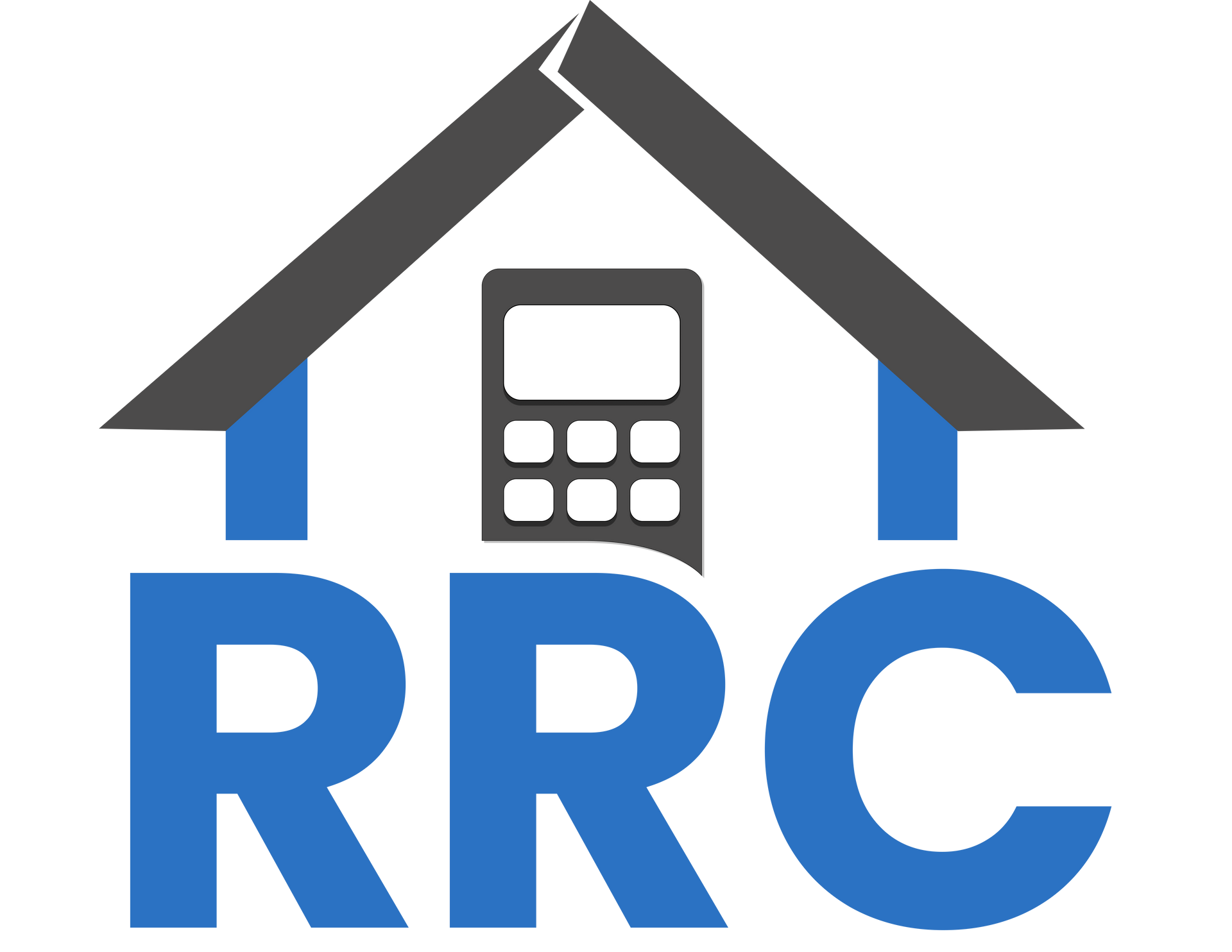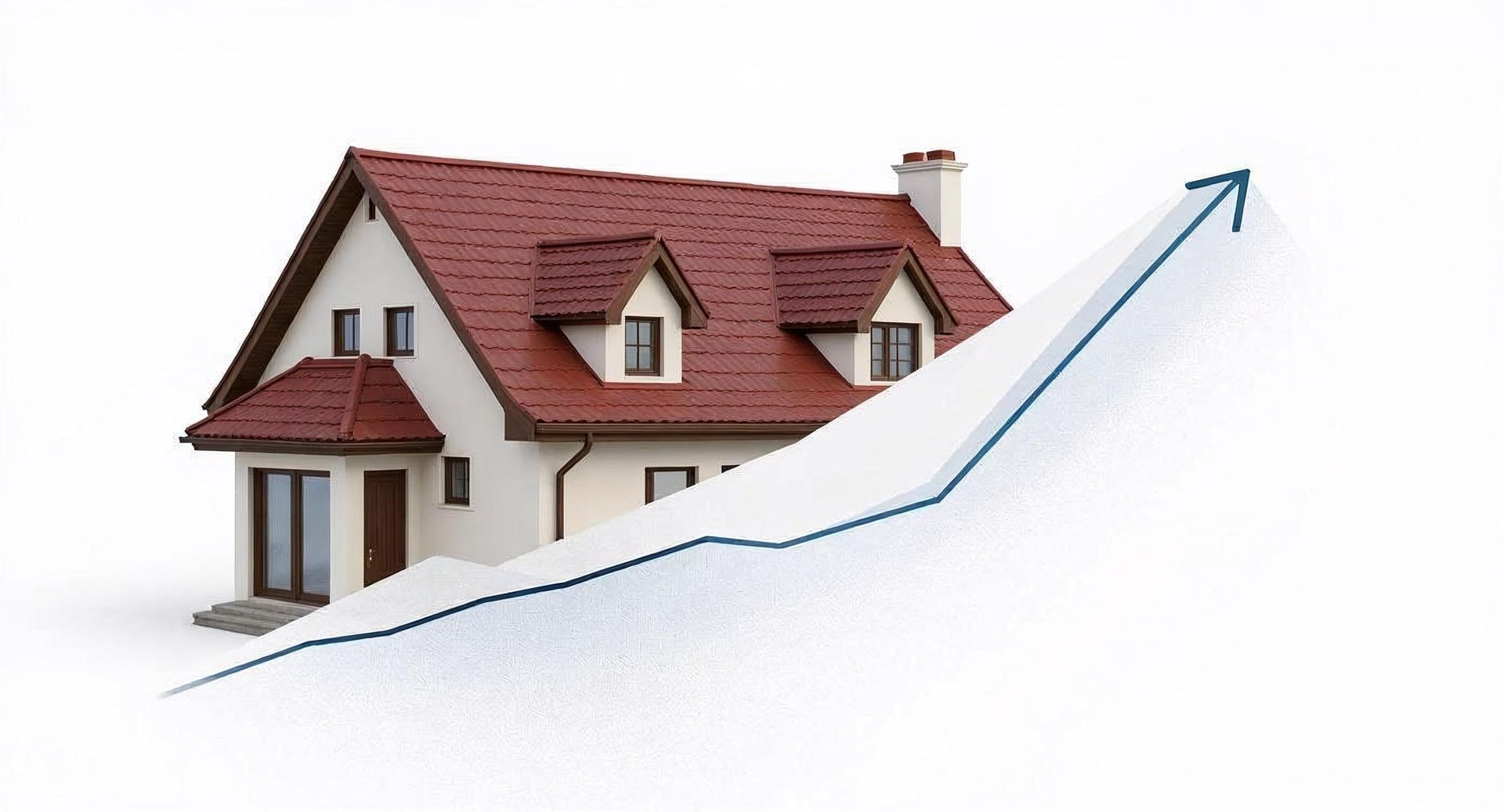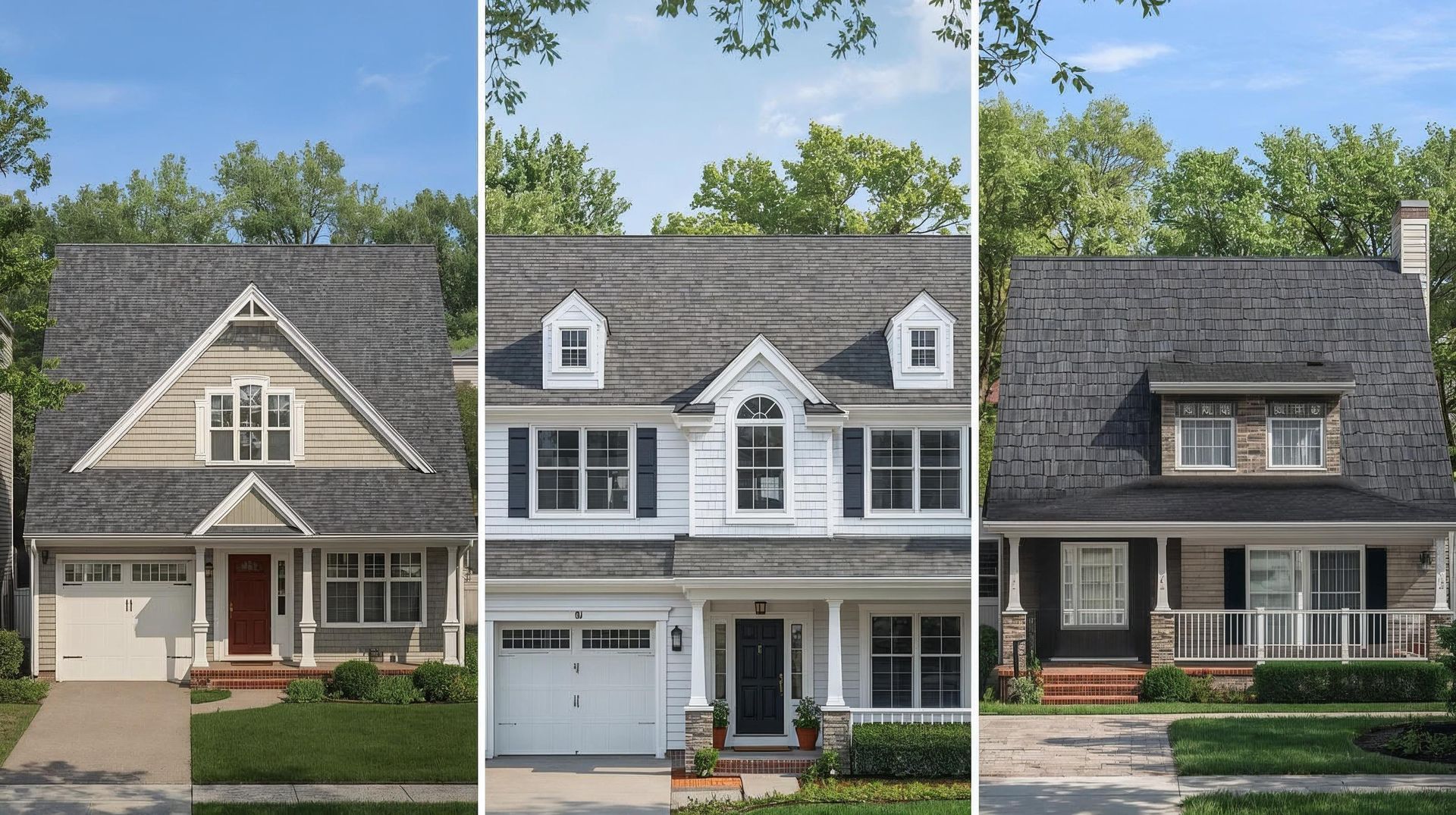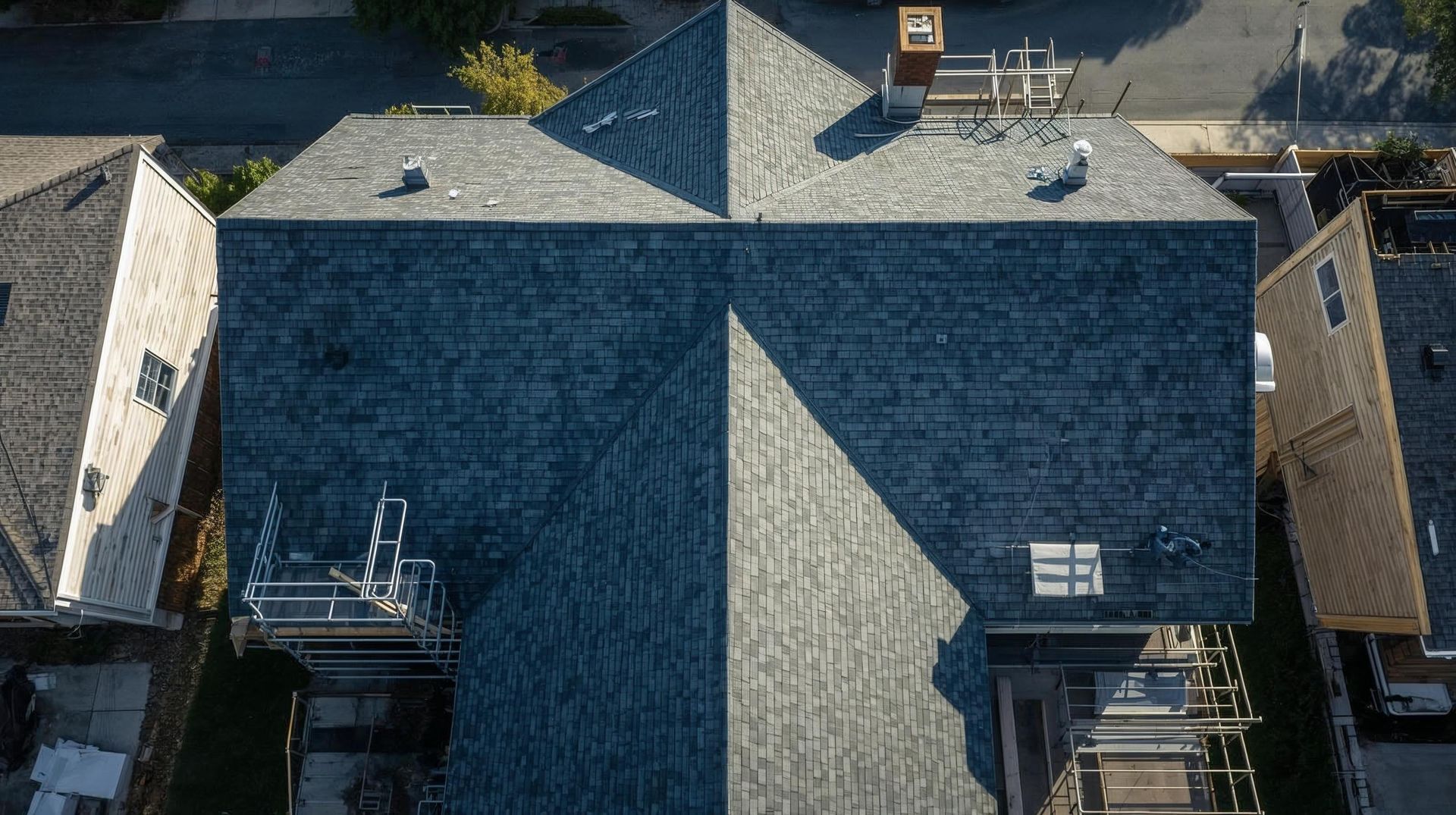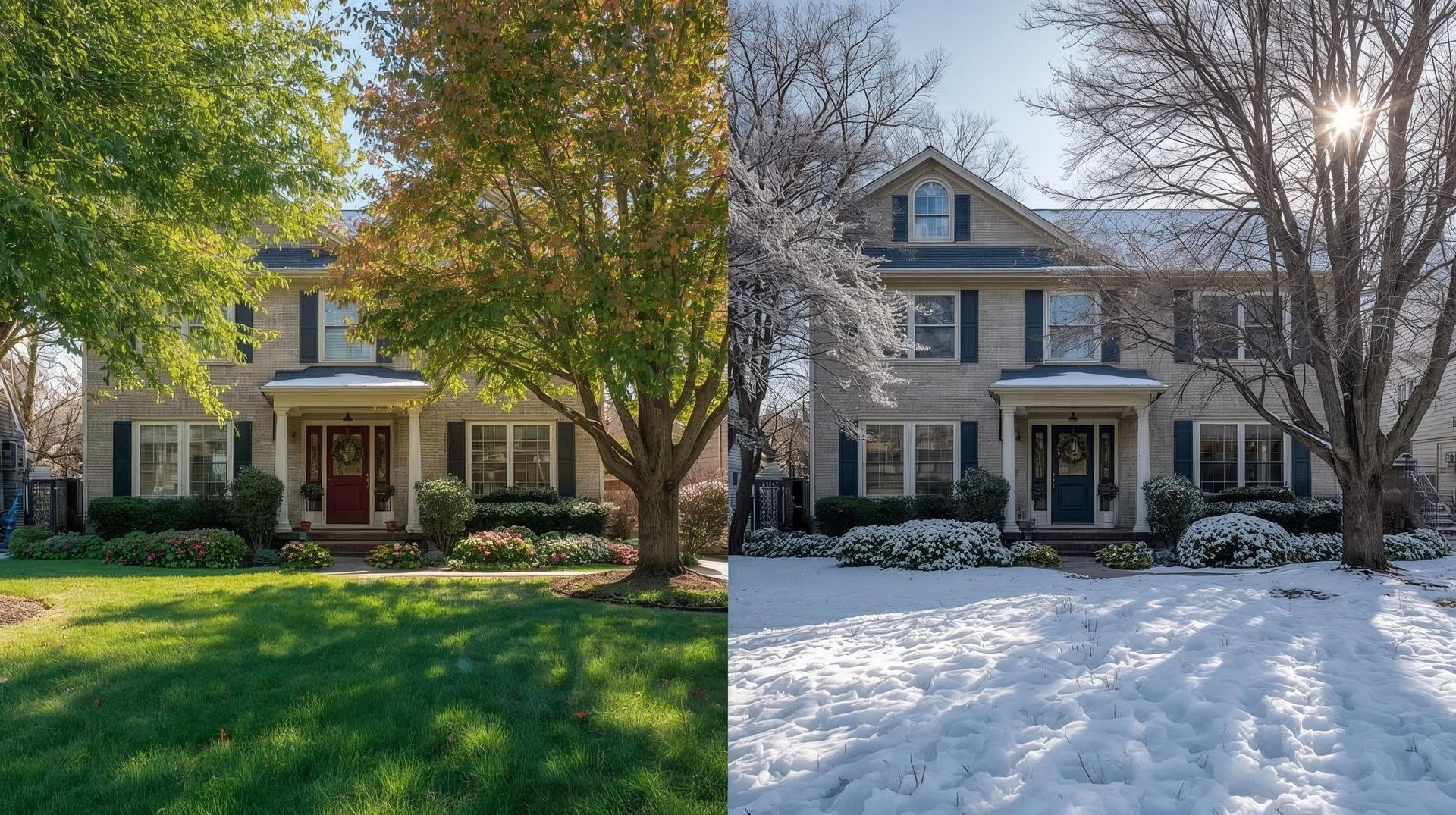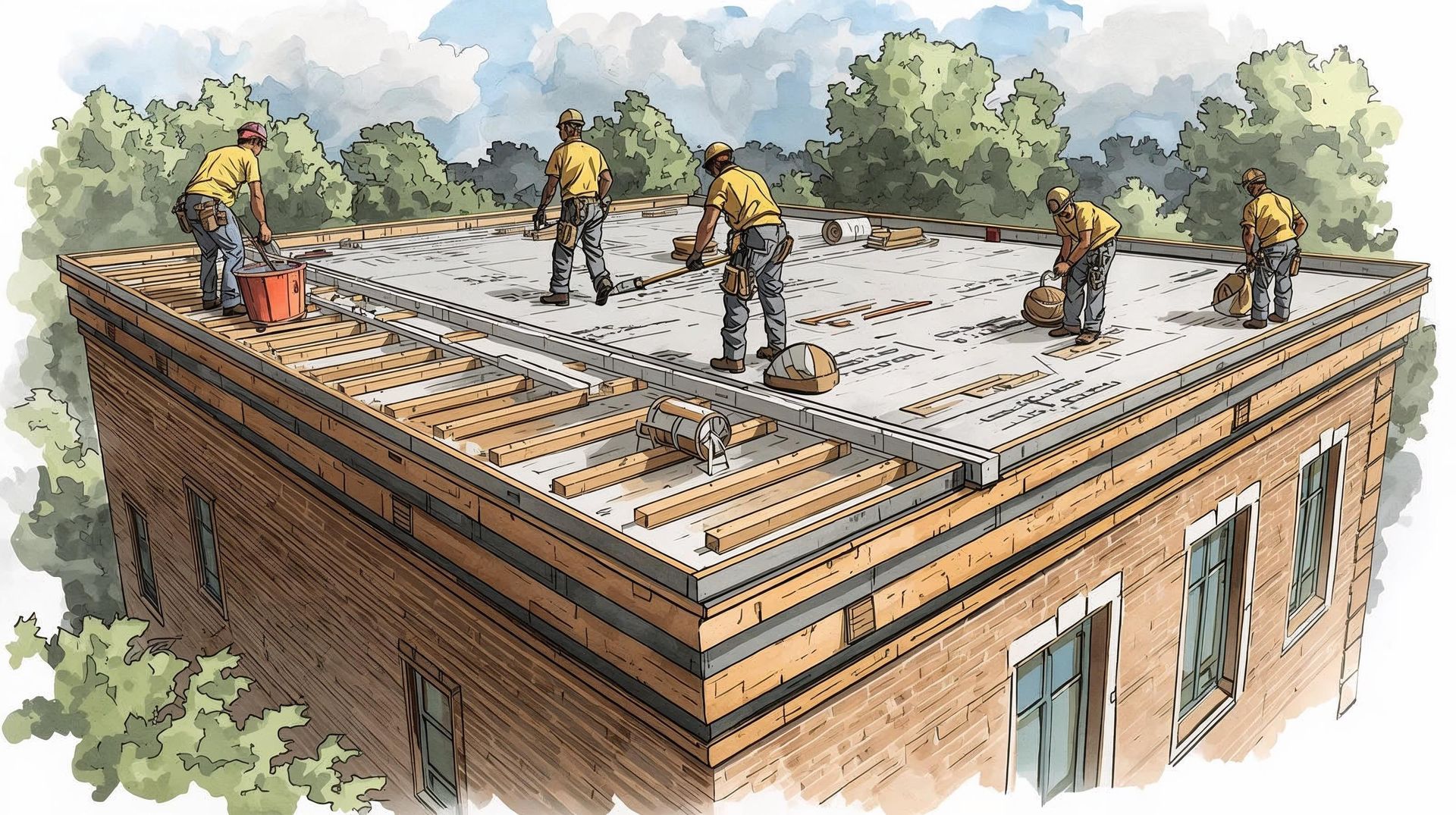The Complete Guide to Roofing Materials: Pros, Cons, and Costs
Key Takeaways
In a hurry? Here's the bottom line on your best options.
- Best Overall Value. Architectural Asphalt Shingles offer the best combination of affordability, durability, and style for the average homeowner.
- Best for Longevity. Metal Roofing and Slate Roofs are the champions of durability, with lifespans that can exceed 50 and 100 years, respectively.
- Best on a Tight Budget. 3-tab asphalt shingles remain the most affordable roofing material, offering the lowest possible upfront cost.
- Best for Hot Climates. Clay and Concrete Tile Roofs are excellent at reflecting heat and withstanding intense sun.
- Know the Real Cost. Use a roof replacement cost calculator to see how your choice of material will impact your specific project's budget.
Curious how these materials will affect your project's price?
>> Get an Instant, Personalized Estimate with Our Roof Cost Calculator <<
The Complete Guide to Roofing Materials: Pros, Cons, and Costs
Choosing the right roofing material for your new roof is a huge decision, and it's not just about looks. It’s a real balancing act between what fits your budget, what matches your home's style, what will last for decades, and what can handle your local weather.
That's exactly what this guide is here for. We’ll break down all the most popular types of roofing materials in a simple way, covering the real world pros, cons, lifespan, and the average cost you can expect for each one.
1. Asphalt Shingles
For most homeowners, asphalt shingles are the go to roofing option because they check all the right boxes. They provide a dependable, nice looking roof without the high cost of other materials. Plus, they are available everywhere and are a routine job for any professional roofing contractor. Let's look at the two main types you should know about.
3-Tab Asphalt Shingles (The Budget Pick)
- Pros. The primary advantage of three tab shingles is their affordability. They are the most budget friendly roofing option on the market, making them an excellent choice for homeowners focused on the lowest possible upfront cost.
- Cons. The main trade off for the low cost is a shorter lifespan. These traditional shingles are also thinner and have a flat design, which makes them more susceptible to damage from high winds and other harsh weather conditions compared to more durable options.
- Cost and Lifespan. You can expect the installed cost to be between $4.25 and $7.15 per square foot. The average lifespan is generally 15 to 20 years.
Architectural Asphalt Shingles (The Value Pick)
- Pros. For a moderate price increase, architectural composite shingles provide a huge leap in quality. They are thicker, more durable, and their layered construction creates a high end look that mimics natural materials like slate or wood.
- This is the most common roofing material for residential roofing today because of its excellent balance of price and performance.
- Cons. The upfront cost is higher than basic three tab shingles. While durable, they do not offer the same longevity as other roofing materials like metal or tile.
- Cost and Lifespan. Expect the installed cost for architectural asphalt shingles to be between $6.00 and $10.50 per square foot. Their lifespan is significantly longer, at 25 to 30 years or more.
2. Metal Roofing
Metal roofing has become an incredibly popular roofing material for its durability and sleek, modern look. Metal roofing materials range from painted steel and aluminum to premium copper. The systems come in multiple styles, from panels that create long vertical lines to metal shingles that mimic the look of traditional materials.
- Pros. A metal roof offers great durability. It can easily withstand harsh weather conditions, is fire resistant, and is very low-maintenance. It is also a very energy efficient roofing option, as it reflects solar heat and can lower your energy costs.
- Cons. The primary drawback is the higher initial cost. Some homeowners also note that metal roofing can be noisy during rainstorms if the roof system does not have adequate thermal insulation. Installation also requires a specialized roofing contractor.
- Cost and Lifespan. The cost per square foot for metal roofing ranges from $8.00 to $30.00 or more depending upon the metal chosen. The life expectancy is usually longer, at 40 to 70 years or longer.
3. Clay and Concrete Tiles
Tile roofing provides a classic, elegant look that is a hallmark of Spanish, Mediterranean, and Southwestern architectural styles. These natural materials are extremely durable and well suited for specific environments.
- Pros. Clay and concrete tiles are built to last. They are a durable option that is completely fire resistant and not likely to rot or host insects as well. Clay tiles are especially effective in hot climates because they help to insulate the home from the sun's heat.
- Cons. Tile roofing is extremely heavy. Many homes require additional structural support to handle the weight, which adds to the cost.
- The tiles can also be brittle and may crack if walked on, making regular maintenance or repairs more difficult. A concrete tile roof is typically less expensive but heavier than a clay tile one.
- Cost and Lifespan. A new tile roof has a replacement cost of $10 to $25 per square foot. These roofs are known for their longevity, with a lifespan of 50 to 100 years or more.
4. Slate Roofs
A slate roof is a premium roofing option for homeowners seeking a timeless, beautiful roof that can literally last for generations. Natural slate is a type of stone that is quarried and split into thin slate shingles.
- Pros. The biggest advantage of slate roofs is their incredible lifespan. They offer unmatched durability and a classic, elegant appearance that can increase a home's value. Slate tiles are also completely fireproof and require very little regular maintenance.
- Cons. The cost of natural slate is the biggest barrier for most homeowners.
- It is also the heaviest popular roofing material and will almost certainly require additional structural support.
- Installation is highly specialized and must be done by an experienced roofing contractor.
- Cost and Lifespan. This is a luxury roofing material. Expect the cost for slate roofs to be $20 to $40 or more per square foot. The lifespan is the longest of any material, at 75 to 150 years or even longer.
5. Wood Shingles and Shakes
Wood roofing provides a beautiful, rustic aesthetic that blends easily with the natural environment. The primary wood species used is cedar because of its natural resistance to decay. A cedar shake is thicker and more rustic than a wood shingle, which is sawn smooth.
- Pros. A cedar shake roof made from natural wood has a stunning appearance that ages to a beautiful silvery gray. Wood roofing also provides good natural thermal insulation, which can help with energy efficiency.
- Cons. Wood roofs require more regular maintenance than other materials to prevent the growth of moss and to treat for rot.
- They are not naturally fire resistant, though they can be treated with fire retardants. The cost is also significantly higher than asphalt shingles.
- Cost and Lifespan. The cost for wood shingles or a wood shake roof can range from $14 to $30 per square foot. With proper care, a wood roof can last 25 to 50 years.
Comparison Table for Roofing Materials
| Material | Avg. Cost / Sq. Ft. (Installed) | Lifespan | Pros | Cons |
|---|---|---|---|---|
| 3-Tab Asphalt Shingles | $4.25 – $7.15 | 15-20 Years | Most Affordable | Short Lifespan |
| Architectural Asphalt Shingles | $6.00 – $10.50 | 25-30+ Years | Great Value, Durable | Higher Cost |
| Metal Roofing | $8.00 – $30.00+ | 40-70+ Years | Very Durable | High Cost, Noisy |
| Clay & Concrete Tiles | $10.00 – $25.00 | 50-100+ Years | Extremely Durable | Very Heavy, Brittle |
| Slate Roofs | $20.00 – $40.00+ | 75-150+ Years | Extremely Durable, Elegant | Very Expensive, Heavy |
| Wood Shingles & Shakes | $14.00 – $30.00 | 25-50 Years | Rustic and Aesthetic | High Maintenance |
Which Roofing Material is Right for You?
- If you're looking for the absolute Best Budget Option... → 3-Tab Asphalt Shingles
- If you want the Best Overall Value (a balance of cost and durability)... → Architectural Asphalt Shingles
- If you're looking for the Longest Possible Lifespan... → Metal Roofing or Slate Roofs
- If you need to match a Spanish or Mediterranean Style... → Clay & Concrete Tiles
- If you want a Natural and Rustic Look... → Wood Shingles & Shakes
- If Energy Efficiency in a hot climate is your top priority... → Metal Roofing or Tile Roofing
Using your main priority, whether it's your budget, your home's aesthetic, or the roof's lifespan, is the easiest way to start narrowing down your choices. The world of roofing materials can be overwhelming, but focusing on what matters most to you makes the decision much simpler.
Now that you know the what, find out the how much. Get the numbers you need to plan your project with confidence.
What is the most durable type of roofing material?
Slate roofs and metal roofs are generally considered the most durable residential roofing options, both capable of withstanding severe weather conditions and lasting 50 years or more.
What is the best roofing material for hot climates?
Clay tiles and concrete tiles are excellent choices for hot climates. Their mass and color options help reflect sunlight and keep the home cooler, which can help lower energy costs.
What's the difference between three tab and architectural asphalt shingles?
Three tab shingles are a single, flat layer and are the most basic, affordable option. Architectural shingles have multiple, laminated layers, which makes them thicker, more durable, and gives them a more dimensional, high end look.
How much more does a metal roof cost than an asphalt shingle roof?
A metal roof typically has a higher initial cost, which is two to four times more expensive than a new roof using architectural asphalt shingles.
Do I need to require additional structural support for heavy materials like tile or slate?
Yes, it is very likely. Slate tiles and concrete tiles are extremely heavy. A roofing contractor will need to have a structural engineer assess your home's framing to ensure it can handle the extra weight before installation.
